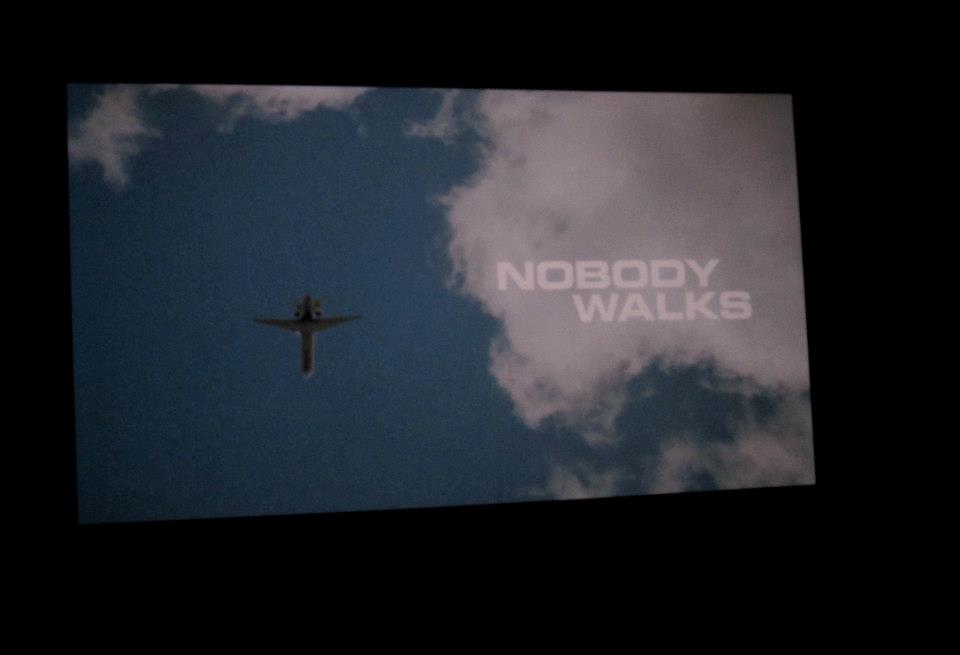The vice and the virtue of NOBODY WALKS is its simplicity. A pretty young artist from New York has arranged for a Los Angeles sound editor to help her complete a gallery film project. His wife is the friend of a friend. The artist arrives on a jet plane and is immediately taken by the still potent myth of Southern Cal, with its cars and palm trees, snapping pictures the whole way to the sound designer’s home. What the film turns out to be about is the human propensity to act on dumb desires that we know perfectly well will turn out badly.
As usual, it is the older but hardly wiser man who urges the imprudent liaison and the youthful mark who resists but gives in to the mutual attraction. The sound designer’s wife is no dummy and is herself remarkably desirable, which makes the straying husband look like one and seem not that desirable himself. The young artist takes the fall and is back to the other coast on the next plane.
Simple. Straightforward. Intelligently acted by Olivia Thirlby as the visiting artist (I have not seen her better); the wife charismatically portrayed by Rosemarie DeWitt (why don’t we see more of her work?); the emotionally deluded sound designer carried off with workmanlike effectiveness by John Krasinski (who has a certain chemistry with Thirlby). DeWitt’s character is an analyst, who dallies with a patient played by Justin Kirk, the charm of whose persona eludes me but adds to the affect of cluelessness and naïveté.
All very straightforward and honest. It makes sense that the script was partially written by the up-and-coming Lena Dunham; the images are pure unadorned narrativity; things happen and they are recorded. I liked NOBODY WALKS even though it felt as if something was missing. In compensation for which there was some pretty good acting and a subtle nod to California and its place in the North American experience.
Check listings for viewing options.
